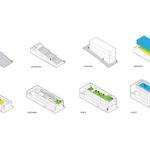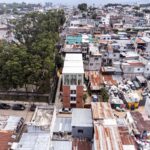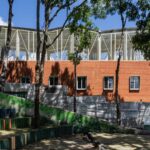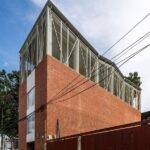
In the heart of Guatemala City, adjacent to the municipal landfill and amidst an informal setting, Plantando Semillas Community Center emerges as a beacon of transformation. Conceived as a collaborative initiative by the organization Planting Seeds International, this project, led by architects Jorge Villatoro, Hans Schwarz Bassila, Luis Pedro García-Salas, and Carlos Mendizábal, transcends architectural boundaries to cultivate a dignified space for community growth.

Community-Driven Design
The genesis of this community center is rooted in active collaboration. Planting Seeds International worked hand in hand with the local community, fostering a participatory approach. Through workshops, the project unfolded across three pivotal phases: Knowing, where the context was comprehended; Designing, where spaces were conceptualized; and Validating, where proposals were affirmed.
Adaptable Architecture for Diverse Needs
The brick architecture seamlessly integrates with the natural contours of the land, presenting a volumetric design that accommodates various mezzanines. The first floor hosts a flexible space adjacent to a small office, while the second level encompasses a classroom, dance room, and playroom. The third level features a multi-purpose court, catering to both sporting and social activities.

Material Choices: A Collective Decision
The selection of materials was a collective decision, involving the community in determining the combination of clay brick, concrete, and the color green. Local clay brick, chosen for its durability, cost-effectiveness, and low maintenance, takes center stage. The use of expanded metal sheets facilitates ventilation on the upper level, offering panoramic views of the sports court.
Community Ownership: Beyond Architecture
The true essence of the Plantando Semillas Community Center lies in its transformative impact on the community. The locals have embraced and taken ownership of the space, transforming it from a mere building into a living testament of unity, learning, and progress. This community-driven approach showcases the profound influence architecture can have when it transcends its physicality, evolving into a symbol of collective identity and empowerment.






























Leave a Reply